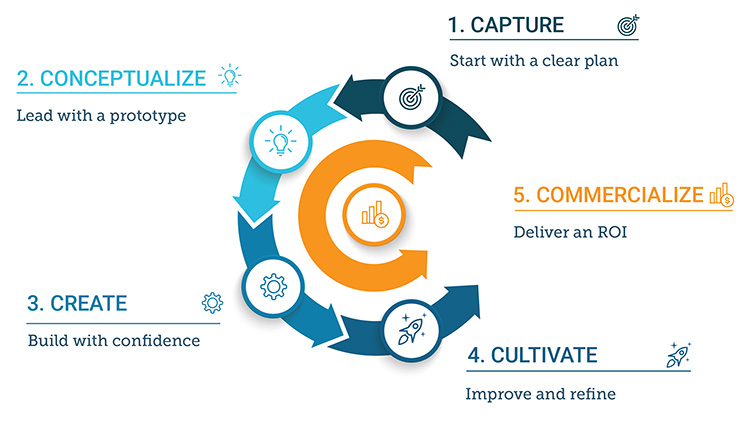eLearning development is the process of creating visually engaging, interactive and responsive learning and training materials which are then delivered via digital methods.
With employees located in different time zones all around the world, continual learning and skill building can be delivered quickly and easily via eLearning, and updated as necessary to reflect changes in legislation, company policies, and business needs.
Despite its virtual delivery, eLearning is a two-way learning process. Content is created and uploaded by the training team, and the participant engages and responds to the content as though it were being delivered face to face. eLearning could be delivered through an intranet platform, a designated Learning Management System, app, or browser experience.
What is the eLearning development process?
The eLearning development process starts with setting learning objectives that are relevant to the desired outcomes of the business. Once the objectives have been decided, content that supports the outcomes is created, and the learning materials are delivered to the end user through the use of digital technology.
Instructional Design Australia use their prolific experience to make it easy to get your new learning platform up and running.
Instructional Design Australia will take you through the following process:
- Establish clear goals for eLearning development
- What are the needs of the business?
- What are the objectives of the training?
- What are the eLearning requirements of the end-users?
- Create learner avatars
- Set milestones for eLearner development
- Decide how the information will be delivered
- What type of activities will assist eLearning?
- What experience does the eLearner require?
- Does the eLearner have the right tools to complete the eLearning?
- In what order does eLearning need to occur?
- How will we know when the learner has achieved competence/mastery of the skill?
- What are the measurable checkpoints of the eLearning framework?
- Formulate a structure for each eLearning module
- Develop the content
- Make it interesting
- Make it engaging
- Make it realistic
- Make it relevant
- Make it helpful
- How are you going to capture the content?
- Who is going to deliver the content?
- What other resources can you draw on to round out the content?
- Use the data to review performance
- How are you going to gather the data?
- What are the key data points that need to be collected?
- How will you gather feedback?
- Think commercially
- How has the eLearning impacted your business?
- Are the team deriving value from the eLearning?
- Could you add more to the learning management system? (For example, branch into a customer eLearning platform, or move your compliance requirements to eLearning?)
- Has the eLearning system delivered what you had intended from the outset?
- Are your eLearners engaged, deriving value, and upskilling from the learning process?
- What business practices have been directly impacted through the use of eLearning?
- What improvements in performance can be derived from the use of the eLearning platform?
If your end-users aren’t engaged with the content, they will not learn from it. Check in regularly to ensure they are getting value from the content, and the learning objectives are being met.
Instructional Design Australia will walk you through the process of eLearning development, get in touch with them today to learn how eLearning can work for your business.
